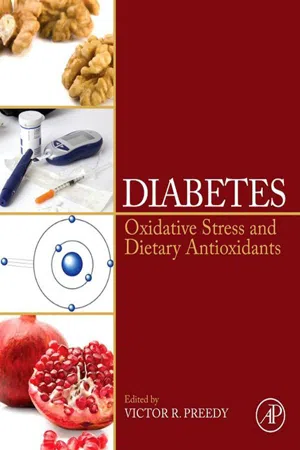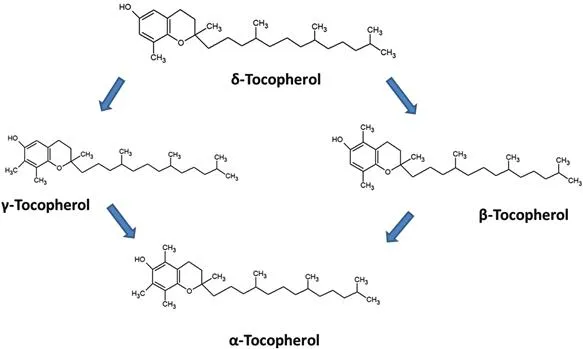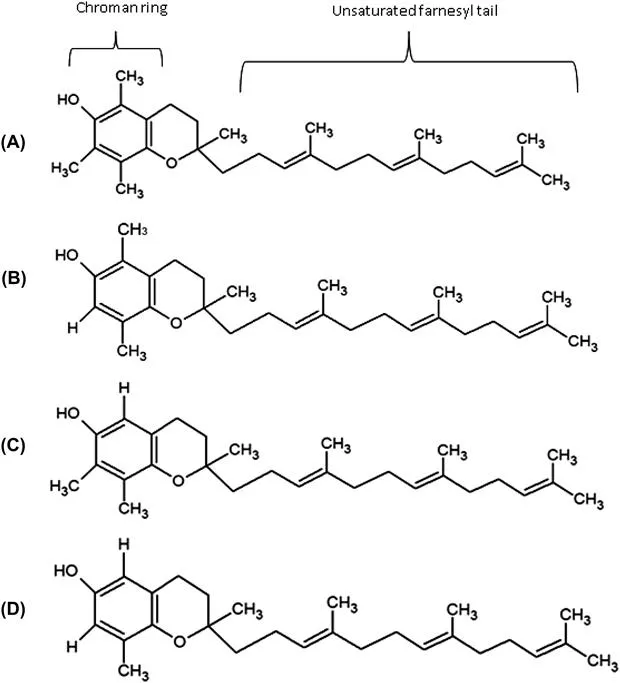![]()
Section II
Antioxidants and Diabetes
Outline
Chapter 7 α-Tocopherol Supplementation, Lipid Profile, and Insulin Sensitivity in Diabetes Mellitus Type 2
Chapter 8 Effect of Salvia miltiorrhiza on Antioxidant Enzymes in Diabetic Patients
Chapter 9 Antioxidant Spices and Herbs Used in Diabetes
Chapter 10 Resveratrol and Oxidative Stress in Diabetes Mellitus
Chapter 11 Vitamin D, Oxidative Stress and Diabetes
Chapter 12 Glutamine and Antioxidant Potential in Diabetes
Chapter 13 The Anti-Oxidative Component of Docosahexaenoic Acid (DHA) in the Brain in Diabetes
Chapter 14 Diabetic Nephropathy and Tocotrienol
Chapter 15 Polyphenols, Oxidative Stress, and Vascular Damage in Diabetes
Chapter 16 Vitamin E and Vascular Protection in Diabetes
Chapter 17 The Use of Ginkgo biloba Extract in Cardiovascular Protection in Patients with Diabetes
Chapter 18 The Protective Role of Taurine in Cardiac Oxidative Stress under Diabetic Conditions
Chapter 19 Statins, Diabetic Oxidative Stress and Vascular Tissue
Chapter 20 Resveratrol and Cerebral Arterioles during Type 1 Diabetes
Chapter 21 Herbal Chrysanthemi Flos, Oxidative Damage and Protection against Diabetic Complications
Chapter 22 Antioxidant Supplements and Diabetic Retinopathy
Chapter 23 Lutein and Oxidative Stress-Mediated Retinal Neurodegeneration in Diabetes
Chapter 24 Epidemiologic Evidence on Antioxidant-related Micronutrients and Diabetic Retinopathy
Chapter 25 Oxidative Stress and the Lung in Diabetes
Chapter 26 Antioxidants, Oxidative Stress and Preeclampsia in Type 1 Diabetes
![]()
Chapter 7
α-Tocopherol Supplementation, Lipid Profile, and Insulin Sensitivity in Diabetes Mellitus Type 2
Liania Alves Luzia and Patricia Helen Rondo, Department of Nutrition, Public Health School, University of Sao Paulo, Sao Paulo, Brazil
Abstract
Diabetes mellitus type 2 (DM2) is one of the leading chronic diseases and a growing public health problem. There is evidence that oxidative stress plays a key role in the early stages of the disease. Vitamin E – α-tocopherol is a potential dietary antioxidant and an important component of cell membranes which apparently affects the lipid profile and insulin sensitivity of DM2 patients. Studies designed to elucidate the mechanisms underlying the oxidative alterations in patients with DM2 are scarce. The evidence supporting the effect of α-tocopherol supplementation on lipid profile and insulin sensitivity of DM2 patients is still not clear. Future studies should consider the potential of this vitamin, evaluating the benefit of this low-cost supplementation alone or in combination with other antioxidants. In this respect, the therapeutic window in which antioxidant supplementation would be effective needs to be identified.
Keywords
Diabetes mellitus; α-tocopherol; antioxidants; lipid profile; insulin sensitivity; lipid peroxidation
List of Abbreviations
α-TTP Alpha-tocopherol transfer protein
AT Alpha-tocopherol
ATBC Alpha-tocopherol, beta-carotene cancer prevention
ATP Adenosine triphosphate
CAM Cell adhesion molecule
CoQ10 Coenzyme Q10
DM Diabetes mellitus
DM2 Diabetes mellitus type 2
GSH Reduced glutathione
HDL-c High density lipoprotein cholesterol
HOPE Heart Outcomes Prevention Evaluation
LDL-c Low-density lipoprotein cholesterol
NAD(P)H Nicotinamide adenine dinucleotide phosphate
NHANES National Health and Nutrition Examination Survey
PPARγ Peroxisome proliferator activated receptor γ
ROS Reactive oxygen species
SOD-Mn Manganese superoxide dismutase
TBARS Thiobarbituric acid reactive substances
VLDL Very low-density lipoproteins
Introduction
Diabetes mellitus (DM) is one of the major chronic diseases that affect mankind regardless of age, social condition and geographic location. Diabetes mellitus type 2 (DM2) is a heterogenous disorder characterized by impaired insulin action and secretion, which accounts for about 90% of the cases of diabetes. The age of onset of DM2 varies, although the disease is more frequent after 40 years of age, with a peak incidence at about 60 years. DM2 is typically a disease for which increased age is a risk factor [1].
According to recent data from the World Health Organization (WHO) [2], the mean prevalence of DM2 is 10%, although this rate can reach 33% in some regions such as the Pacific Islands. Factors such as growing urbanization, population aging, high-carbohydrate diets, reduced levels of physical activity, and obesity contribute to the high incidence of DM2 which, in turn, predisposes to cardiovascular diseases. Concomitantly, DM2 leads to depletion of the cellular antioxidant defense system, increasing the levels of free radicals and favoring a pro-oxidant state and consequent oxidative stress which causes tissue damage and cell death. The biological mechanisms whereby hyperglycemia acts on these processes are not fully understood, but evidence indicates that hyperglycemia, hyperinsulinemia and insulin resistance modify the lipid profile, predisposing to an increased production of free radicals and a possible reduction in plasma antioxidants such as vitamin E [3,4].
In the First National Health and Nutrition Examination Survey (NHANES I) Epidemiologic Follow-up Study, the use of vitamin supplements was found to be associated with a 24% lower risk of diabetes over 20 years of follow-up. However, only a few human trials have examined the association between antioxidant status, including vitamin E, in DM2, and the findings are contradictory.
Vitamin E and Diabetes
Vitamin E belongs to the group of liposoluble vitamins which are necessary for normal cell differentiation and function. The term vitamin E refers to a group of eight fat-soluble compounds with different biological activities, which are divided into two groups. The first group is derived from tocol (Figure 7.1) and includes four of the eight compounds: α-tocopherol (AT), β-tocopherol, γ-tocopherol, and δ-tocopherol. Tocopherols have a saturated side chain with 16 carbon atoms. There is an order of conversion among forms of tocopherol (Figure 7.2). Because of the efficiency of the transfer protein, AT is detected in the plasma at ten times the level of γ-tocopherol and its antioxidant potential in the biological environment varies, with α > γ > δ > β. The second group is derived from tocotrienol (Figure 7.3) and includes the remaining four forms of vitamin E with biological activity: α-tocotrienol, β-tocotrienol, γ-tocotrienol, and δ-tocotrienol [5].
FIGURE 7.1 Structural formula of the tocopherol isomers.
FIGURE 7.2 Chemical structures of tocopherols and the order of conversions among forms.
FIGURE 7.3 Tocotrienol structure.
α-Tocotrienol (A) has three methyl groups on the chroman ring, β-tocotrienol (B) and γ-tocotrienol (C) have two methyl groups and δ-tocotrienol (D) has only one methyl group.
All forms of vitamin E are absorbed by enterocytes and are released into the circulation inside chylomicrons. In the liver, α-tocopherol transfer protein (α-TTP) incorporates vitamin E into very low-density lipoproteins (VLDL). Vitamin E is excreted mainly by secretion into bile and elimination in feces in the form of tocopheryl hydroquinone conjugated with glucuronic acid. About 1% is excreted in urine as glucuronic acid-conjugated tocopheronic acid. The other forms of vitamin E are much less retained and are generally excreted in urine or bile.
Of all vitamin E forms, AT, known as 2R,4R,8R-α-tocopherol or its abbreviated form RRR-α-tocopherol, is the natural compound with the highest biological activity. In plasma, AT accounts for 80% to 90% of all vitamin E forms and the remainder is mainly γ-tocopherol. Plasma levels of AT range from 5 to 16 μmol/L; plasma levels or serum concentrations of AT below 6.11 μmol/L usually indicate vitamin E deficiency, values between 11.6 and 16.2 μmol/L are considered low, and concentrations above 16.2 μmol/L refer to normalcy. The plasma levels of this vitamin are intimately related to the plasma levels of total lipids and cholesterol, hence it is recommended that concentrations of lipid which are AT-correlated values are usually expressed in the ratio AT/cholesterol. Levels below 2.2 μmol AT/μmol cholesterol indicate a risk of deficiency, while values above 5.2 are considered suitable for this reason (Table 7.1).
TABLE 7.1
Plasma Levels of α-Tocopherol
Sauberlich [6].
Decreased levels of vitamin E may indicate increased exposure to oxidative stress. AT has a strong antioxidant potential and is an important component of cell membranes, interrupting the lipid peroxidation chain reaction induced by free radicals in vivo, donating a hydrogen atom to a peroxyl radical and scavenging alkyl peroxy radicals (Figure 7.4). In addition to its antioxidant properties, vitamin E reduces cytotoxicity, minimizes the effect of oxidized lipoproteins, suppresses the proliferation of smooth muscle cells, reduces platelet adhesion and aggregation, and improves endothelial function [7]. There is strong evidence that oxidative stress plays a key role in the early stages of DM, and AT is a powerful chain-breaking antioxidant, which may be a protective factor against oxidative...




